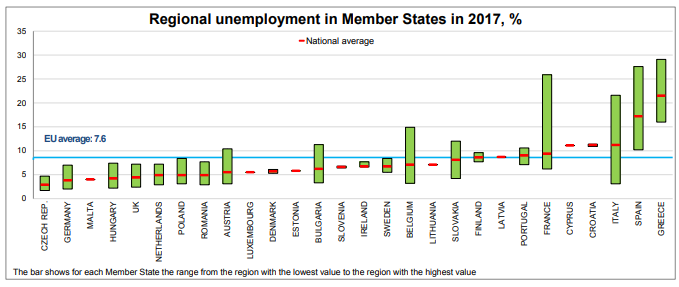Zsolt Darvas, (2018), “European income inequality begins to fall once again”, Bruegel, 30 April Income inequality among European Union citizens has previously shown strikingly different developments compared with income inequality among United States citizens. The economic collapse of post-communist countries after 1989 led to a rapid increase in income inequality among the combined group of citizens of the current 28 EU members until 1993. But from then on, inequality in …Read More
Reflections on monetary policy in the euro area
ECB, (2018), “Reflections on monetary policy in the euro area”, 27 April While the recent flow of data points towards some moderation in the on-going economic expansion, growth is still expected to remain solid and broad based. Monetary policy measures introduced since 2014 have been instrumental in supporting euro area growth and employment. Underlying inflation continues to be subdued and have yet to show convincing signs of a sustained upward …Read More
Globalisation: New Deal On Labour Mobility
Dani Rodrik, (2018), “Globalisation: New Deal On Labour Mobility”, Social Europe, 26 April The crisis is the result of a lot of people not being particularly happy about the way that globalisation has gone. I think it’s rooted in the highly asymmetric effects that globalisation has had in societies around the world – particularly the advanced democracies, which have seen their underlying social contracts dissolved. This is the result not …Read More
Euro area economic and financial developments by institutional sector: fourth quarter of 2017
Euro area economic and financial developments by institutional sector: fourth quarter of 2017, 27 April 2018 Euro area saving (net, as a percentage of disposable income) was higher in the fourth quarter of 2017 than in the same quarter of the previous year. Total euro area non-financial investment (net) increased owing to higher investment by households and non-financial corporations (NFCs). Euro area net lending to the rest of the world …Read More
State contingent debt as insurance for euro-area sovereigns
Maria Demertzis & Stavros Zenios, (2018), “State contingent debt as insurance for euro-area sovereigns”, Bruegel, working paper, 26 April Since the financial crisis, EU countries’ economies have recovered to the point that they are exiting their adjustment programmes. Institutional stability mechanisms have been improved at the European level, with the promotion of the banking union and the establishment of a European Monetary Fund, for instance. However, the authors argue that …Read More
Eurostatistics: DATA FOR SHORT-TERM ECONOMIC ANALYSIS
Eurostatistics/DATA FOR SHORT-TERM ECONOMIC ANALYSIS/04-2018 The annual GDP growth rate of the euro area was 2.7% in Q4 2017, stable compared to Q3. The ESI (Economic Sentiment Indicator) declined for a third month in a row reaching 112.6 in March 2018 (–1.6 points). European Union and euro area: Annual GDP growth stable in Q4 2017 in the euro area The annual GDP growth rate of the euro area was …Read More
How income gains from globalisation are distributed
Valentin Lang, Marina Mendes Tavares, (2018), “How income gains from globalisation are distributed”, 27 April On few economic developments of the recent decades are the sentiments so diverse as they are on globalisation. Some credit globalisation with boosting economic well-being and reducing poverty. Others blame it for leading to appallingly high levels of inequality, benefitting a few, while leaving many behind. These recent trends have supported the political backlash against …Read More
Income inequality in the EU
Eurostat/Income inequality in the EU/26 April 2018 Data from 2016 show wide inequalities in the distribution of income. In the EU, the top 20% of the population (with the highest income) received 5.2 times as much income as the bottom 20%. This ratio varied considerably across the Member States, from 3.5 in the Czech Republic and 3.6 in Slovenia, Slovakia and Finland, to 6.0 or more in Bulgaria (8.2), Lithuania …Read More
Unemployment rates in the EU regions ranged from 1.7% to 29.1%
Eurostat/Unemployment rates in the EU regions ranged from 1.7% to 29.1%/26 April 2018 At the end of the fourth quarter of 2017, the government debt to GDP ratio in the euro area (EA19) stood at 86.7%, compared with 88.1% at the end of the third quarter of 2017. In the EU28, the ratio also decreased from 82.4% to 81.6%. Compared with the fourth quarter of 2016, the government debt to …Read More
The Logical Next Step for Europe’s Integration
Ferdinando Giugliano, (2018), “The Logical Next Step for Europe’s Integration”, BloomberView, 25 April For the past year, euro-zone leaders have vowed to take steps to complete Europe’s monetary union. The 19 countries share a single currency and a central bank, but they still lack all the necessary mechanisms to deal with major imbalances and shocks. While some members would like to have more fiscal transfers and a common safety net …Read More







